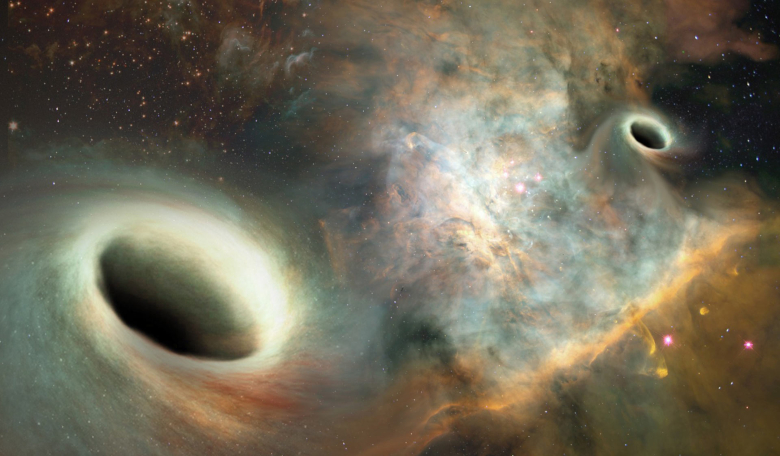Astronomers using the LIGO-Virgo-KAGRA facilities to detect and study gravitational waves have found a whopping 35 new events in their last observing round. This flood of detections bumps up the total number of known events to 90 since gravitational-wave observations first began.
Gravitational waves, a phenomena predicted by Albert Einstein over a century ago, are distortions or ripples in spacetime, caused by some of the most violent and energetic processes in the Universe, such as the collision and merger of black holes.
They were first discovered in September 2015 using the two detectors of the Laser Interferometer Gravitational-Wave Observatory (LIGO) in Louisiana and Washington state in the US, and announced publicly in February 2017.
The scientific breakthrough was so significant, it later earned Barry C. Barish and Kip S. Thorne a share of the Nobel Prize for Physics in 2017, “for decisive contributions to the LIGO detector and the observation of gravitational waves."
Since then, both LIGO and the Advanced Virgo detector in Italy, have been busy racking up detection after detection, including signals received from the first black hole-neutron star merger and the first binary neutron star merger; an event which also produced the birth of the lowest mass black hole ever found.
As of 7 November, when the LIGO-Virgo-KAGRA Collaboration released the results of events observed between November 2019 and March 2020, that total number of detections now stands at 90.
“The many new detections in the third observing run were made possible due to some improvements to the already impressively sensitive detectors, such as the implementation of the quantum technology of squeezed light and the use of higher laser power,” says Katherine Dooley, a reader at Cardiff University.
Like the detections before them, this latest batch of events is just as diverse. Around 32 of the events were most likely to be caused by black hole mergers – two black holes spiralling around each other that finally join together.
Several of the black holes formed from these mergers exceed 100 times the mass of our Sun, and are classed as intermediate-mass black holes.
This type of black hole has long been theorised by astrophysicists, but has so far been hard to spot. Thanks to these observations, this new class of black holes is turning out to more common in the Universe than previously thought.
Two of the 35 events spotted were likely to be neutron stars and black holes merging – a much rarer event, and one that was only discovered in the most recent observing run of LIGO and Virgo.
Of these rare neutron star and black hole mergers, one event seems to show a massive black hole (about 33 times the mass of our Sun) with a very low-mass neutron star (about 1.17 times the mass of our Sun); one of the lowest-mass neutron stars ever detected.
The final gravitational wave event is still something of a mystery, say the collaboration, as they cannot be sure what one half of the merger is.
With a mass around 2.8 times the mass of our Sun, it’s either a very light black hole or a very heavy neutron star. This poses something of a conundrum because scientists had expected that the most massive a neutron star could be before collapsing to form a black hole is around 2.5 times the mass of our Sun.
In addition, no black holes have been discovered with electromagnetic observations with masses below about 5 solar masses.
So which is it? The collaboration are still not sure, but it could mean that theories behind black hole formation from stellar collapse may need to be revised.
“Only now are we starting to appreciate the wonderful diversity of black holes and neutron stars. Our latest results prove that they come in many sizes and combinations, we have solved some long-standing mysteries, but uncovered some new puzzles too. Using these observations, we are closer to unlocking the mysteries of how stars, the building blocks of our Universe, evolve,” says Christopher Berry, a Lecturer at the University of Glasgow.
With observing run number three now complete, the LIGO and Virgo observatories are currently undergoing improvement works before the upcoming fourth observing run, expected to begin next summer.
Japan are also getting in on the action and its Kamioka Gravitational-Wave Detector (KAGRA) observatory will also join the next full observing run.
Located deep under a mountain, KAGRA completed a successful first observing run in 2020, but has yet to join LIGO and Virgo in making joint observations.











